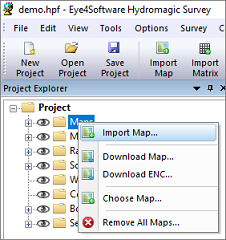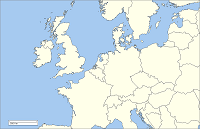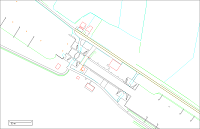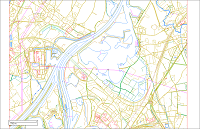Vector maps
The software is shipped only with a few demo maps because it is not feasible to bundle it with all the most recent and detailed maps worldwide. To make sure almost any map can be loaded, a wide range of file formats is supported. This makes that Hydromagic can be used with the most commonly used map formats. Two types of maps are supported: vector maps and raster maps. The list below shows information on some supported raster map formats.
Supported vector maps
Vector maps are files that contain objects instead of image data, vector maps contain objects such as lines, points, polylines, polygons, and more. Sometimes these objects may also be associated with user data or a row in a data table. Because the vector objects are drawn at runtime, there is no limitation on the zoom level as with raster maps. The following vector formats are supported:
- AutoCAD DXF Drawing files;
- ESRI Shape files (SHP);
- Keyhole Markup Language files (KML);
- Microstation ISFF DGN Design (DGN) files;
- S57 Electronic Nautical Chart files;
- S63 Electronic Nautical Chart files;
- Arc/Info E00 Coverage files;
- Arc/Info Generate files;
- Atlas BNA Boundary files;
- GeoJSON map Files;
- Idrisi vector format files;
- MapInfo TAB files;
- Openstreetmap export files.
You can import a vector map into your project by right-clicking the 'Maps' folder in the 'Project Explorer' and selecting the 'Import Map...' option from the context menu, as shown in the screenshot below:

Right-click the "Maps" folder in "Project Explorer" to import a new map.
ESRI shapefiles
AutoCad DXF files
MicroStation DGN files



